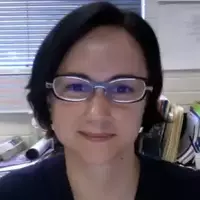Reformed teaching in geoscience classrooms: How engaged are our students and what can we do to engage them more?
Oral Session Part of
Wednesday B: Research on Student Learning and Engagement in Geoscience Classrooms
Authors
 Rachel Teasdale, California State University-Chico
Rachel Teasdale, California State University-Chico
 Karen Viskupic, Boise State University
Karen Viskupic, Boise State University
 Julie Bartley, Gustavus Adolphus College
Julie Bartley, Gustavus Adolphus College
 Katherine Ryker, University of South Carolina-Columbia
Katherine Ryker, University of South Carolina-Columbia
 Dori Farthing, SUNY College at Geneseo
Dori Farthing, SUNY College at Geneseo
 David McConnell, North Carolina State University
David McConnell, North Carolina State University
 Cathy Manduca, Carleton College
Cathy Manduca, Carleton College
 Monica Bruckner, Carleton College
Monica Bruckner, Carleton College
 Ellen Iverson, Carleton College
Ellen Iverson, Carleton College
 Rory McFadden, Carleton College
Rory McFadden, Carleton College
A team of trained observers made direct observations of 204 unique geoscience classes across the US using the Reformed Teaching Observation Protocol (RTOP). Observed classes were taught by faculty of diverse teaching rank and years of experience at a variety of institution types. Data were collected from introductory and upper-level undergraduate courses that ranged in size from 6 to 275 students. Total RTOP scores do not correlate with class size, class level, institution type, instructor gender, instructor rank, or years of teaching experience. Classroom instruction was separated into three categories based on total RTOP scores: Teacher Centered (≤30), Transitional (31–49), and Student Centered (≥50). Practices that characterize differences among these categories were determined by (1) statistical analyses of RTOP item scores and RTOP subscale scores; (2) analysis of instructor responses to a survey about teaching practices; and (3) qualitative analysis of written comments made by RTOP observers. Results of these analyses provide a coherent picture of instructional strategies used in geoscience classrooms, and define three ways in which Student Centered classrooms are likely to differ from Transitional and Teacher Centered classrooms. Student Centered classes are more likely to include (1) activities that have the students actively engaged with one another; (2) activities in which instructors assess student learning and adjust lessons accordingly; and (3) opportunities for students to answer and pose questions that determine the focus of a lesson. Student engagement, as measured with RTOP rubric scores correlates with instructor professional development and the use of lesson plans and activities that have students work together to solve problems or interpret data, such as activities designed through the InTeGrate program.
